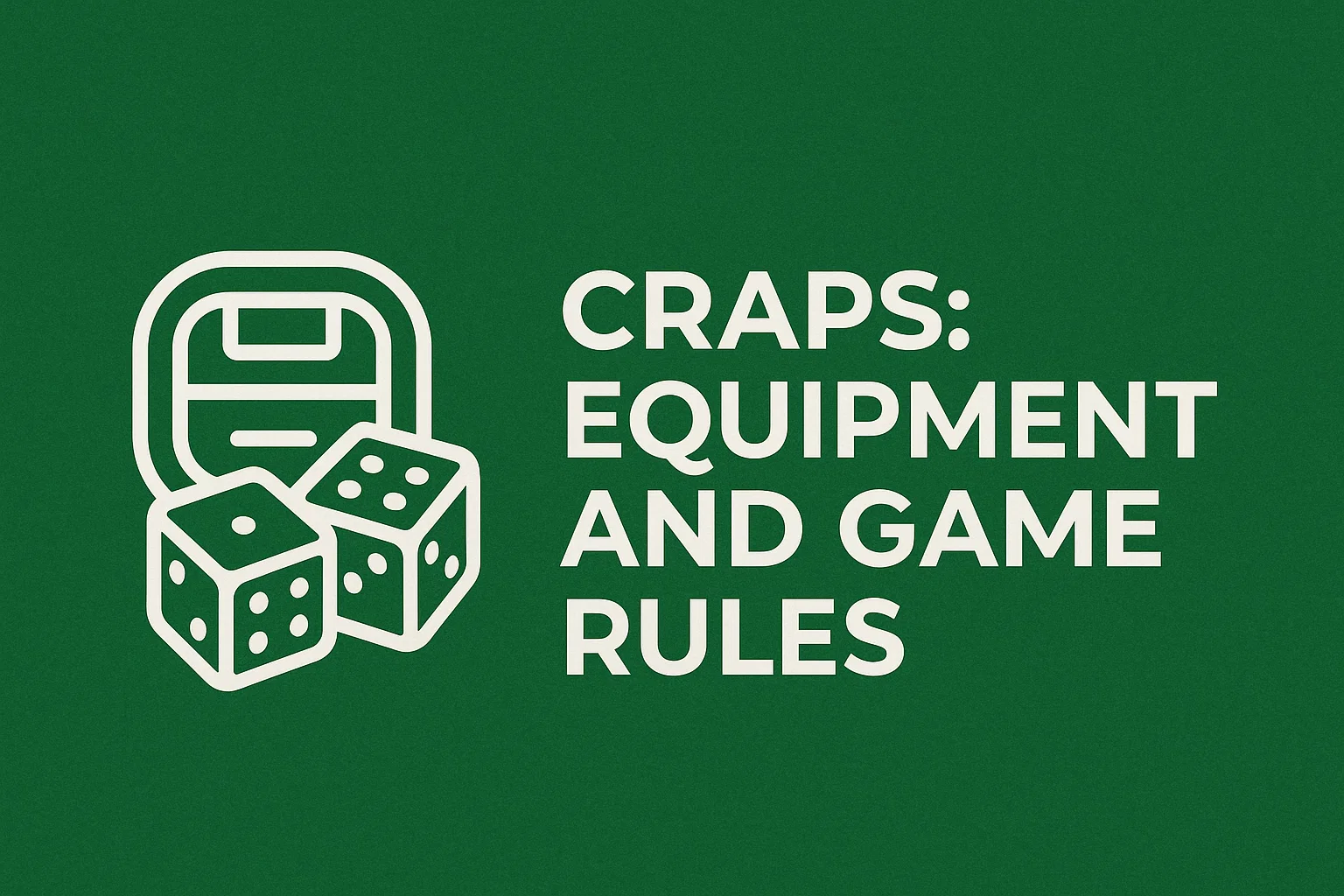Craps: Equipment and Game Rules

History of Craps
Dice are some of the world's oldest games. They were well known to Ancient Egypt and Rome, and were played by players of all classes. Where the term Craps came from is not known. It's said to have been derived from a losing roll that resembled the "eyes of a crab," which received its name from the French crab.
Prior to the emergence of modern Craps, a game called Hazard existed during the 18th century. Later on, it spread to America, through some transformations, and finally came to be known as Craps. During the first half of the 20th century in the United States, the final game evolved.
By the 1930s, Craps was played in almost every casino in America and was considered one of the most popular casino games. However, by the 1990s, it fell out of favor.
Today, with the rapid growth of online casinos for craps enthusiasts, Craps has once again become widely available. Online Craps retains the same excitement and suspense as the land-based version. Players can bet on one or multiple outcomes, waiting for the next dice roll.
For beginners, the rules will look complicated, since the game is being played round by round and offers an incredibly vast variety of opportunities to bet. But as soon as you understand the mechanisms, Craps is a very straightforward and enjoyable game. You don't have to conduct complicated calculations – just place your bet and wait for the result. Some bets can be repeated many times, and some even can be removed in the middle of the game.
Description of Craps
Craps is played on a special table where wagers are placed. Two six-sided dice are utilized for the game.
Players alternate as the shooter (the one who rolls the dice). The shooter rolls the dice, tosses them, and the two dice combine to equal the result of the toss.
One of the most characteristic things about Craps is its long betting table, able to accommodate ten different bets in one round of the game. Similar to roulette, where you can bet for red/black or odd/even, Craps presents Pass Line and Don't Pass Line – essentially win/lose wagers. These are decent, with approximately 1:2 odds. The same applies to Come and Don't Come bets. With an Odds Bet on top of these, the result can be great.
The overall goal is to roll a successful combination at one of several stages of the game. The dice combination can be from 2 to 12. The table of Craps is particularly arranged to suit different betting possibilities.
How Craps Is Played
The game is played in rounds, the length and quantity of which are determined by the result of the dice. There are bets that can only be made before the initial roll, and others that can be made afterwards.
- If the first roll (the Come Out roll) is 2, 3, 7, 11, or 12, the round immediately ends. Paid-out winning bets are paid, and losing bets are removed. The game resumes a new round.
- If the first roll is 4, 5, 6, 8, 9, or 10, then that number is the Point. A special puck is then placed on the table with the word "ON" to mark it. The game continues around in circles until the same Point number or a 7 are rolled. If the Point is rolled again, Pass Line bets are a winner. If a 7 is rolled, those bets are a loser. The puck is switched to "OFF," and a fresh round starts.
Probability in Craps
Compared to roulette, where each bet carries the same probability, Craps has different odds depending on the bet. There are 36 possible results from the dice, so having a knowledge of the probabilities will enable players to place more beneficial bets.
Strategy in Craps
It's important to remember that any one roll of a dice is independent of the previous rolls. It doesn't make it more or less likely next time because six rolled five times in a row.
The best bets in the long run are Pass Line or Don't Pass and Buy or Lay bets. These provide a player with the best odds for consistent play, although winning real money is always a matter of risk-taking.
Payout Table in Craps
Most players start with the Pass Line or Don't Pass Line bets, which pay 1:1. The odds for other bets are as follows:
Pass Line and Come bets:
- 4 or 10 → pays 2:1
- 5 or 9 → pays 3:2
- 6 or 8 → pays 6:5
Don't Pass and Don't Come bets:
- 4 or 10 → pays 1:2
- 5 or 9 → pays 2:3
- 6 or 8 → pays 5:6
Key Terms in Craps
- Shooter – the player who rolls the dice.
- Come Out roll – the first roll before determining the Point. If there is a 7 or 11, Pass Line wins, and if there is 2, 3, or 12, Pass Line loses.
- Point – the number (4, 5, 6, 8, 9, or 10) which must be rolled again before a 7 in order to win Pass Line bets.
- Make the Point – when the shooter rolls the Point again before a 7.
- Boxcars – rolling double sixes.
- Craps Out – rolling 2, 3, or 12 on the Come Out roll.
Controversies Surrounding Craps
Craps has been at the forefront of some controversy in its time, and most of it has to do with dice. Unweighted or "crooked" dice with off-center weights were supposedly used by cheaters to fix games, as reported.
There are also claims that skilled players could manipulate their throws, rolling the same number repeatedly.
When playing Craps, stay alert and keep an eye on the dice and other players – not everyone at the table may be honest.
